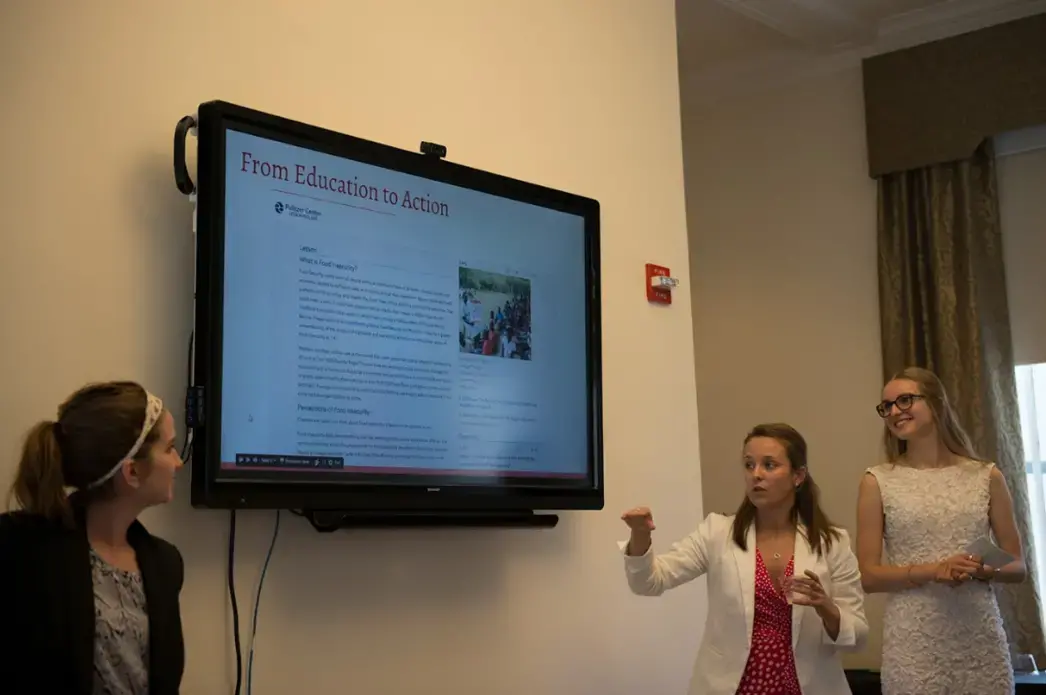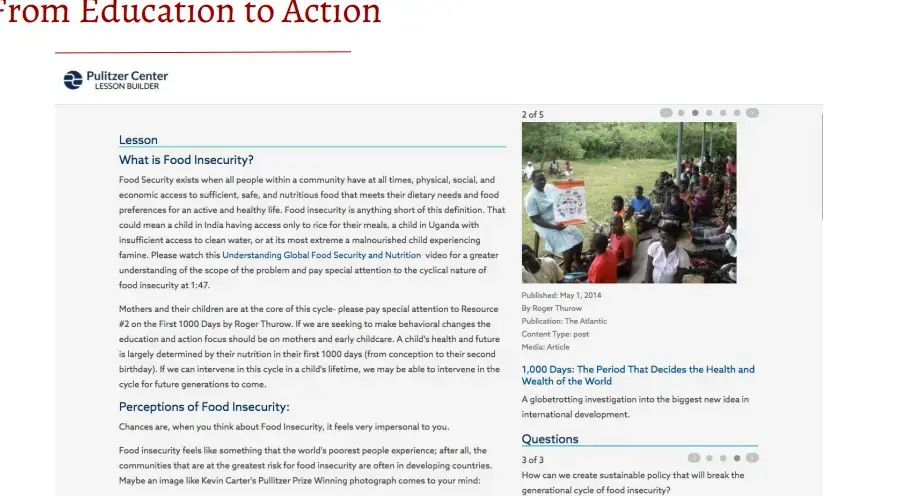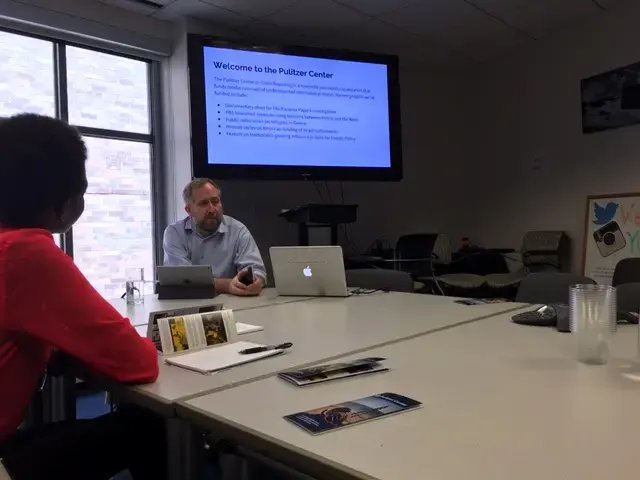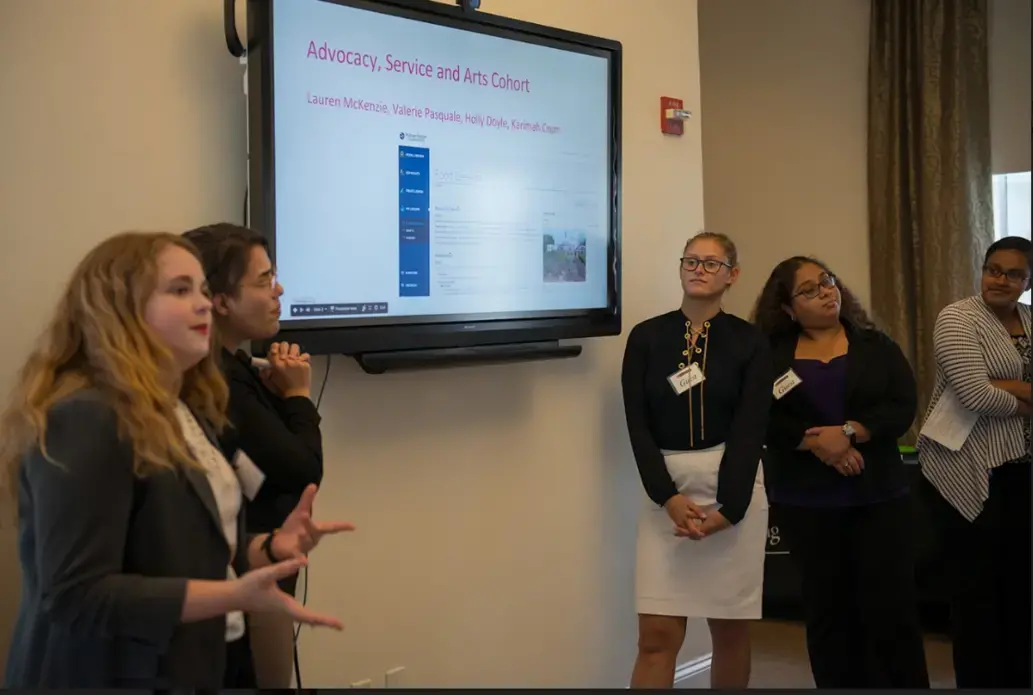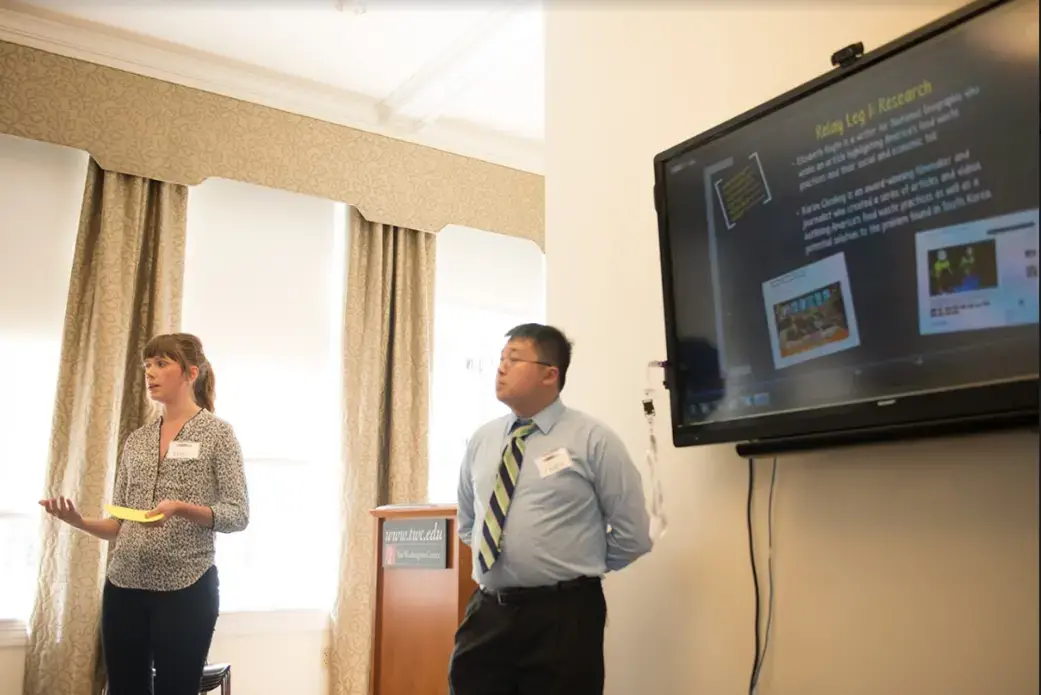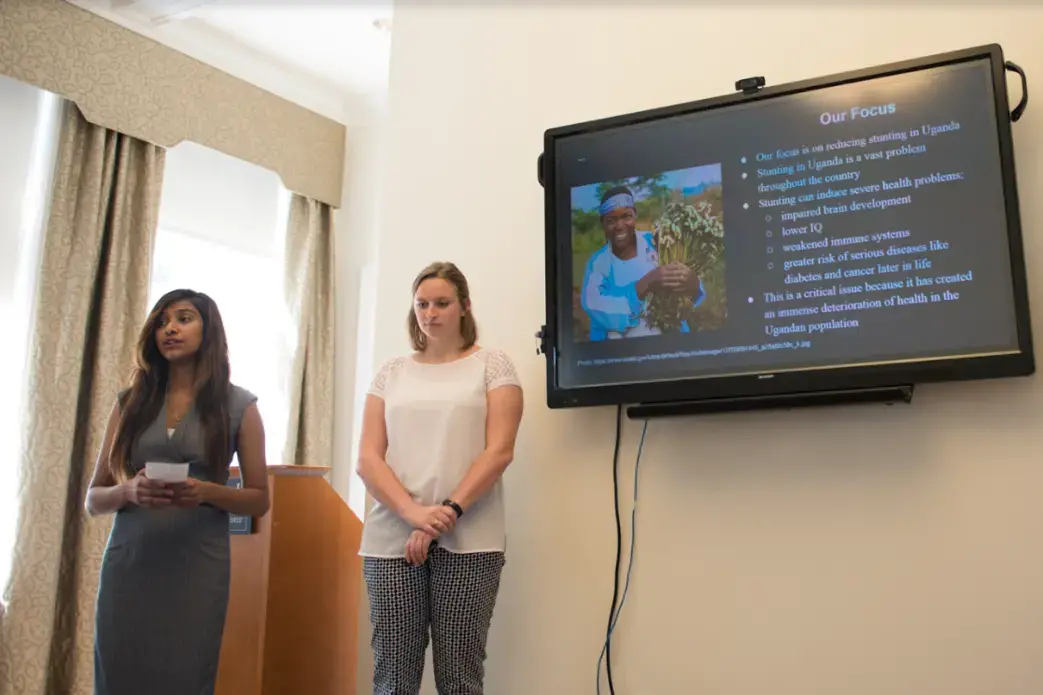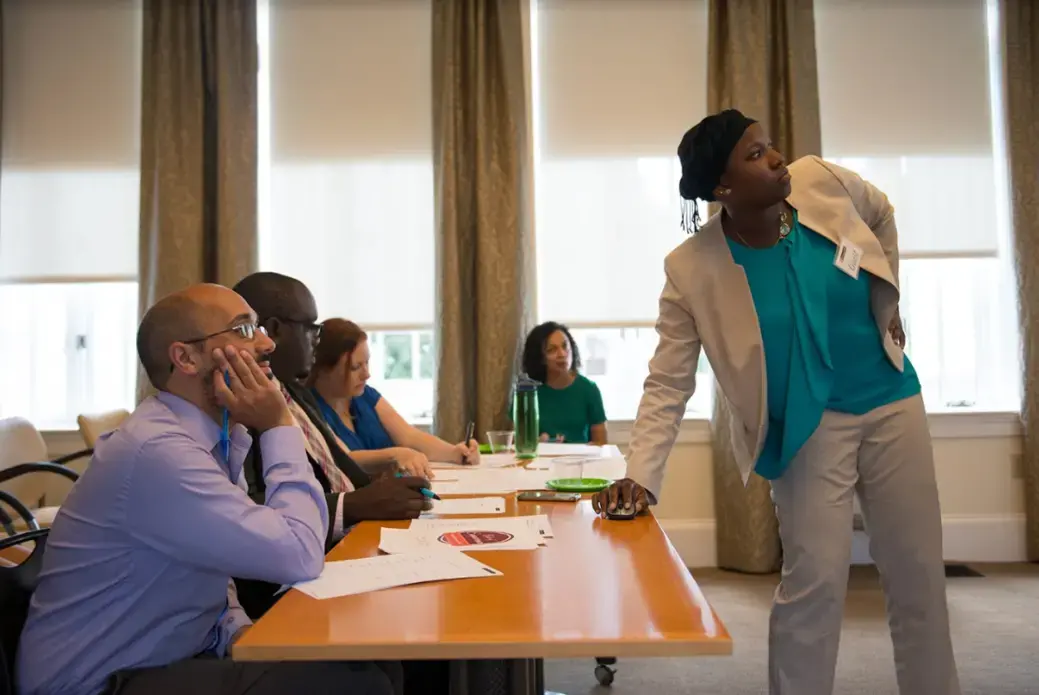"Welcome to your lesson on Food Insecurity and the Health Behavior Gap!" Julie Eller wrote in a lesson plan titled "Food Insecurity: From Education to Action. "The goal of this lesson is to prepare our teammates from International Affairs and Communications with an overview of food insecurity as it relates to community health education and the health behavior gap."
Eller designed the lesson plan as part of The Food Insecurity Project, a program created in summer 2016 as a collaboration between the Pulitzer Center and the Summer Internship Program at The Washington Center (TWC) in Washington D.C.
The TWC Summer Internship Program schedule makes it difficult for undergraduate students from different professional tracks to collaborate on a single collaborative research project. To overcome that challenge, TWC and Pulitzer Center created the Food Insecurity Project as a research relay that would ultimately include elements built by group members from different professional tracks over the course of three separate visits to the Pulitzer Center.
The 25 participating students elected into the relay from one of three professional tracks: Advocacy, Service and Arts (ASA), International Affairs and Media & Communications. Working in five teams made up of members from each cohort, the participants used Pulitzer Center reporting as the inspiration for generating lesson plans, policy briefs, and communications plans that offer practical solutions for combating food insecurity.
The relay took place in three stages:
Part 1: Research
On June 10, students from the Advocacy, Service and Arts (ASA) professional track met with Roger Thurow to learn more about food insecurity and determine what specific issue they would like their research relay group to focus on. Thurow began by describing his experience reporting on hunger and malnutrition in Ethiopia. "No one should have to die of hunger," he said, explaining how a visit with one Ethiopian man and his son during the 2003 famine led to over a decade of reporting on hunger and malnutrition that has resulted in three books. He added, "Watching someone die of hunger becomes a disease of the soul."
Students worked with Thurow and Pulitzer Center Senior Education Manager Fareed Mostoufi to ultimately decide on five topics for the Food Insecurity Project's research relay: 1) farming crises, (2) food deserts, (3) stunting in Uganda, (4) food waste , and (5) education. They then broke into five groups, assigning one to three students per topic, and worked with the Lesson Builder to design lesson plans that used Pulitzer Center reporting and additional research to clearly communicate the issue they hoped to investigate in their project. Here are the final lesson plans created by each group:
Culture of Waste: The Gap Between Food Waste and Food Insecurity
Food Deserts
Food Insecurity: From Education to Action
Food Insecurity in Africa: A Farming Crisis
Stunting in Uganda
Eller, who focused on education, concluded her lesson plan with notes to the students that would ultimately create the next elements of her project. "For the International affairs team: how can we use policy to reduce the barriers that widen the health behavior gap?" she wrote. "For the Communications team: how can we market the policy to communities in need in a way that motivates behavior change?"
Part 2: Strategy Brief
On June 24, students from the International Affairs cohort of the summer internship program met with Kimberly Flowers, director of the Food Security Project at the Center for Strategic and International Studies, to discuss her experience developing and implementing food security policies. Students then worked with Flowers to write strategy briefs outlining concrete policy/public programs that would combat the food security challenge described in the Lesson Builder plans devised by their ASA group members.
Sarah Gerwens, who elected to join the education project, wrote in her final brief, "As Julie Eller points out in her lesson plan, there is a difference between what people know is the healthy choice (e.g. eating an apple) and the actual decision they make (e.g. eating an ice-cream instead). This is referred to as the health behavior gap and successful policy increasing food security needs to bridge that gap, so people don't only know how they should act in theory, but actually do so in practice. Our strategy is informed by Malcolm Gladwell's research regarding what he calls the "tipping point" – the moment when enough people act or think a certain way that rapid social change occurs (Gladwell, 1996). The FIP (Food Insecurity Project) strategy team aims to create a positive "contagion" that spreads the desired behavior until it is widely adopted and becomes the norm rather than the exception – leading to sustainable and bottom-up social change within the communities." The brief goes on to describe a plan of creating centers for women in Guatemala and Uganda that offer nutrition classes, farming collectives and loans for women to start their own gardens.
The final strategy briefs from all four groups are attached below.
Part 3: Communications Plan
On July 15, students from the Communications internship cohort met with Pulitzer Center Communications Director Jeff Barrus to learn about the development of press and marketing plans. In collaboration with Barrus, they then wrote communications strategies that utilized the research from the Lesson Builder plans to promote the program/policy designed by the International Affairs students.
Alaina Seguin and Ochuko Okor started their communications plan for the education project by reading through the strategy brief from Sarah Gerwens to identify potential audiences for marketing. Click here to see the final marketing plan, which features initiatives geared towards women in Guatemala and Uganda.
Part 4: Planning and Presentation
Each group of ASA, International Affairs and Communications students had two weeks to meet and plan their final research relay presentations. Group members from different professional tracks, who had only been in contact through the creation of their contributions to the project, met outside of their professional development hours to finalize their presentations. On Friday, July 29, all five groups then presented their final three-part projects at The Washington Center to a panel of judges, which included staff members from Pulitzer Center and The Washington Center.
Groups described plans for countering food waste through social media campaigns, educating communities about the impacts of stunting through engagement of international NGOs, empowering local farmers in Africa by lobbying to change international trade policies and combating food deserts by collaborating with local grocery stores to create community-based farmers markets. In the end, the group that explored education as a tool for combating food insecurity received the highest overall score for their project. Click here to see their winning presentation.
The Impact of The Food Insecurity Project
After the presentations, group members gathered for pictures and hugged in celebration of their final projects. "I loved being able to broaden my horizon and learn new resources," one student wrote anonymously in her final evaluation of the program."
"I loved the website and the guests we had that helped with our deliberation on how to handle the topic," another added.
"Having Roger Thurow come and speak to us was incredible," another student wrote. "All of the ASA students were engaged."
In writing her final reflection for the summer internship program, ASA student Holly Doyle ultimately focused on The Food Insecurity Project as the main driver of her learning this summer. She wrote, " I am deeply grateful for my time spent with Cultivate the City and with the Pulitzer Center on Crisis Reporting. I was familiar with food deserts and other manifestations of food insecurity, but the opportunities I was fortunate enough to partake in as part of this program helped me build on that knowledge. I am looking forward to doing what I can in my community in San Marcos, Texas to help my fellow residents be more food secure."
The Pulitzer Center education team would especially like to thank The Washington Center's L.E.A.D. instructors Chris Mesarios, Danielle Samsingh and Aaron Hood for all of their work putting together The Food Insecurity Project. If you are interested in connecting with the Pulitzer Center to develop a similar project for your school and/or organization, please contact us by emailing [email protected].
- Document
- Document
- Document
- Document
- Document
- Document




